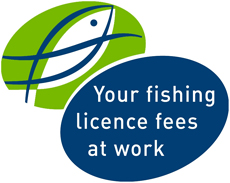Quantifying recreational catch and effort from the Corio Bay region

April 2015
Recreational Fishing Grants Program Research Report
Executive Summary
Recreational anglers fishing areas in Corio Bay, have expressed concern in recent years over reduced catch rates and the impact of commercial net fishing on fish stocks.
The Victorian Fisheries Authority requires reliable information on catch and fishing effort to in order to inform management decisions for commercial and recreational fisheries. Victorian commercial fishers are required to report daily catch weights and fishing effort within spatially bound grids; however, there is no such requirement for recreational fishers. This study presents results of a targeted recreational fishing survey conducted at four boat ramps within the Corio Bay region during the peak fishing season from January – May 2014. This information was used to estimate total recreational catch for key species in the region, and in conjunction with recreational survey data collected from 2003–2014, to examine trends in catch rates, fishing effort and catch composition for key recreational species.
An estimated 47,535 (17.7 t) of fish were caught and retained from 11,742 recreational fishing trips during the targeted survey. Around 75% of all fish caught and retained by recreational anglers were either snapper, flathead or whiting highlighting the importance of these species to the recreational fishery in this region. The recreational fishery is characterised by a group of experienced anglers who take 80% of the catch while applying only 63% of fishing effort. Catch rate (number of fish per hour) trends in the Corio Bay region varied for key recreational species. Decreased catch rates during the peak recreational fishing season (January – May) were evident for King George whiting after 2008, but were stable for snapper and flathead. The decline in catch rates for whiting is consistent with current understanding of the population dynamics of this species and follows a period of lower recruitment during the mid-2000s. Although localised depletion (caused by both recreational and commercial fishers) has the potential to influence catch rates at relatively small spatial scales (e.g. Corio Bay), the biological stock status of snapper, whiting and sand flathead are considered sustainable.
Fishing effort (based on trailer counts at boat ramps) in this fishery during January – May has declined since 2004/05 for reasons that are not well understood, but may reflect displaced recreational fishing effort due to perceived competition with commercial fishers and lower catch rates for key species such as King George whiting.
Further Information
For a copy of the Full Report please email: richard.rogala@vfa.vic.gov.au
